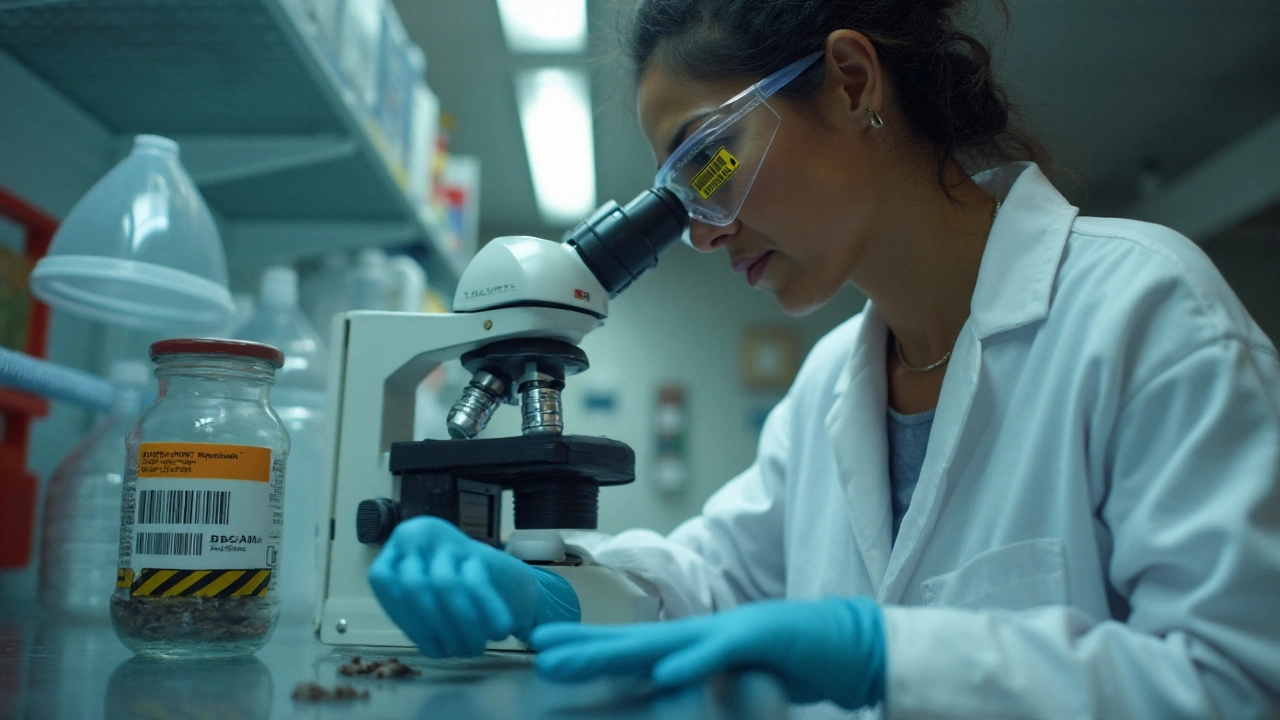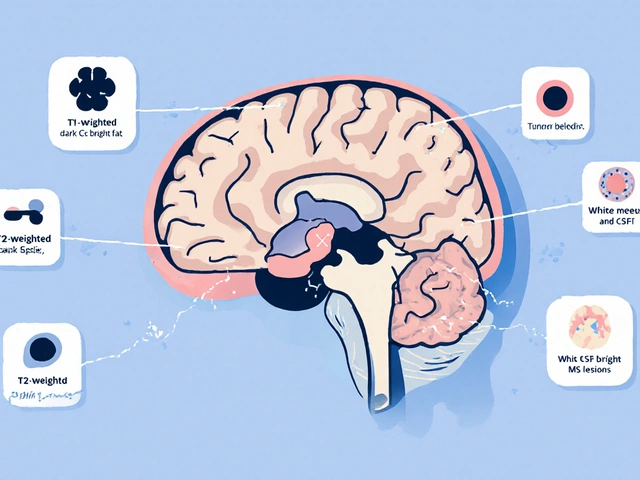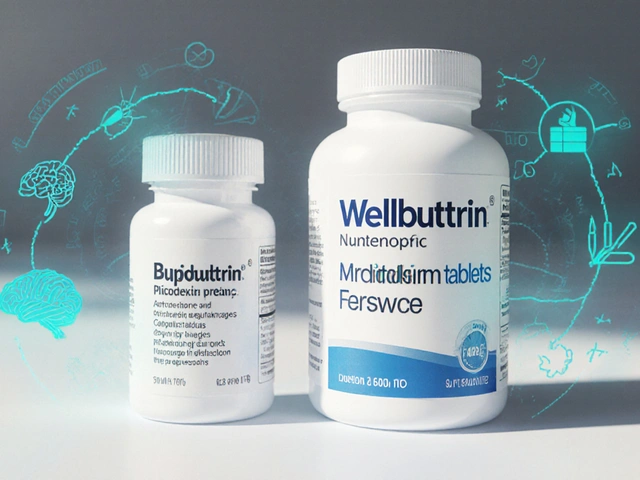TL;DR / Key takeaways
- Despite the hype, the Calabar bean (Physostigma venenosum) is a toxic plant, not a safe wellness supplement.
- Its active compound, physostigmine, is a prescription drug used by doctors for specific emergencies-not for daily health goals.
- Marketing claims (focus, weight loss, energy) aren’t backed by modern clinical trials. Risks include severe poisoning.
- If you see it in a “supplement,” avoid it; check labels for synonyms like physostigmine, eserine, Physostigma venenosum, ordeal bean.
- Choose safer, evidence-backed options for focus and energy: caffeine + L-theanine, creatine, omega-3s, sleep, strength training, and a balanced diet.
You clicked because you want a shortcut to better health-maybe cleaner energy, sharper focus, faster results. Here’s the straight talk: the Calabar bean is famous in toxicology textbooks, not in safe supplementation. It was once used as an ordeal poison in West Africa; today, its main compound is a prescription-only antidote for specific poisonings in hospital settings. If someone is pitching it as the “ultimate supplement,” you deserve facts, not folklore.
What Calabar Bean Is-And Why People Are Pushing It Now
Let’s clear the name confusion first. Calabar bean, Physostigma venenosum, is a legume native to West Africa. Its seeds contain physostigmine (also known as eserine), a potent acetylcholinesterase inhibitor. That sounds technical, but the simple version is: it boosts acetylcholine, a neurotransmitter involved in memory, muscle movement, and the parasympathetic “rest and digest” system.
Why the sudden buzz? Three reasons:
- “Natural nootropic” marketing: Anything that nudges neurotransmitters gets pitched as a brain booster.
- Social media cherry-picking old pharmacology facts: Physostigmine can cross the blood-brain barrier, so marketers jump to “better focus.”
- Supplement gray zones: Some sellers mislabel or hide dangerous alkaloids in proprietary blends. That’s not new, just trending again in 2025.
Here’s the catch. Physostigmine has a narrow safety margin. That means the line between “maybe helpful” and “harmful” is thin. Doctors give it carefully, in small doses, in monitored settings, with an antidote (atropine) at the ready. That’s the opposite of a casual daily supplement.
As someone who lives in Durban and checks labels in local shops and online marketplaces, I’ve seen how fast questionable products appear and disappear. The names look exotic. The promises sound fresh. But the science hasn’t changed: this plant is not a routine wellness tool.
| Claim you might see | What the science actually says | Risk level if ingested | Notes / typical context |
|---|---|---|---|
| “Boosts memory and focus fast” | No high-quality trials for healthy users. Physostigmine studied mainly in clinical/toxicology settings. | High (bradycardia, seizures, respiratory distress possible) | Medical use is tightly controlled; not for general cognition. |
| “Natural weight-loss aid” | No credible evidence for fat loss or appetite control. | High | Cholinergic side effects overshadow any theoretical benefit. |
| “Superfood from Africa” | It’s a toxic seed, historically used as an ordeal poison. | High | Historical use indicates danger, not daily nutrition. |
| “Herbal mood enhancer” | No modern, robust clinical evidence. Mechanism doesn’t support mood claims. | High | Unpredictable dosing makes any mood effect unsafe to chase. |
Key identifiers to avoid on labels:
- Physostigma venenosum
- Physostigmine (eserine)
- Calabar bean / ordeal bean
If any of those appear, put the bottle back. Don’t assume “proprietary blend” means safe-if a seller won’t disclose exact alkaloids and doses, that’s your cue to walk away.

Safety, Evidence, and Legal Reality in 2025
Let’s map the real-world status. This plant isn’t sitting in the same category as common herbs like ginger or ashwagandha.
Evidence and medical use:
- Physostigmine is a prescription drug used by clinicians for specific poisonings (anticholinergic toxicity). It’s given under monitoring because it can slow the heart, trigger severe cholinergic symptoms, and cause seizures. Pharmacology sources like Goodman & Gilman’s Pharmacological Basis of Therapeutics explain these risks clearly.
- There are no modern, well-designed randomized controlled trials supporting Calabar bean as a daily supplement for healthy people. You might find old case reports or small studies related to glaucoma or memory decades ago. Medicine moved on to safer options.
- The World Health Organization’s poison monograph for physostigmine and standard toxicology texts document serious adverse events from small dosing errors. That’s the opposite of a comfortable margin of safety.
What can go wrong if someone ingests it? Classic cholinergic toxicity. The usual pattern looks like this:
- Early: sweating, drooling, tearing, abdominal cramps, nausea.
- Then: vomiting, diarrhea, shortness of breath (bronchospasm), slowed heart rate, low blood pressure.
- Severe: confusion, seizures, dangerous breathing problems. This can be life-threatening.
That list isn’t there to scare you-it’s to set realistic expectations. When a compound can do that with dosing slips measured in milligrams, it shouldn’t live in a casual supplement stack.
Legal and regulatory angle (2025):
- South Africa: Physostigmine is a scheduled, prescription medicine regulated by SAHPRA. A wellness capsule listing physostigmine would be noncompliant.
- United States: Physostigmine is a prescription drug; Calabar bean isn’t an approved dietary ingredient under DSHEA. FDA has issued warnings on similar unapproved, risky ingredients in supplements.
- European Union/UK: Prescription-only status; unsafe in consumer supplements. Enforcement varies, but a product with physostigmine wouldn’t pass as a lawful food supplement.
Bottom line: if you see Calabar bean marketed as a supplement, you’re not looking at a cutting-edge biohack-you’re looking at a regulatory red flag.
Why the dosing is unworkable in supplements:
- Natural variability: Alkaloid content in seeds varies by plant, season, and processing. That makes “standardized” dosing unreliable without pharma-grade controls.
- Narrow therapeutic window: Tiny errors matter. Pharma handles that; supplement shops don’t.
- No antidote at home: In hospital, clinicians keep atropine ready. You don’t have that safety net on your kitchen counter.
Red flags when shopping online:
- Words like “ancient African secret,” “ordeal bean,” or “eserine boost.”
- Vague claims about neurotransmitters without any citations or dose details.
- Proprietary blends that list “bean extract” and hide milligrams.
- Seller websites with no address, no third-party testing, and stock photos of “lab reports.”
Quick decision tree you can use:
- Does the label list physostigmine/eserine/Physostigma venenosum? → Avoid.
- Is the brand transparent about every active, exact doses, and independent testing (ISO/Accredited lab)? → If not, avoid.
- Is there at least one modern, peer-reviewed clinical trial in healthy adults showing benefit and safety at the proposed dose? → If not, avoid.
Credible sources you can ask your pharmacist or doctor to check: WHO Poison Information Monographs (physostigmine), Goodman & Gilman’s Pharmacology, national medicine schedules (SAHPRA in South Africa), and reputable toxicology references.

Smarter, Safer Paths for Energy, Focus, and Wellness
You wanted an “ultimate supplement.” Here’s the truth from someone who lifts, runs, and writes: it’s almost never one exotic plant. It’s a smart combo of safe habits plus a few well-supported tools. No drama, just results.
Safer, evidence-backed options you can actually put to work:
- Caffeine + L-theanine: The duo most people feel. Caffeine perks you up; L-theanine can soften the jitters. A 2013 review by Einöther and Giesbrecht found improved attention and task switching with the combo in several small trials.
- Creatine monohydrate: Not just for the gym. Meta-analyses (e.g., Avgerinos et al., 2018) suggest modest cognitive benefits in sleep-deprived or stressed states, plus physical performance and neuroprotection angles.
- Omega-3s (EPA/DHA): Brain and heart basics. Evidence is mixed for memory in young, healthy adults, but supportive for mood and general brain health, especially if your diet is low in fatty fish.
- Magnesium glycinate or citrate: Helpful if your intake is low and stress is high. Sleep and muscle relaxation often improve. Keep doses modest to avoid stomach issues.
- Sleep, light, and movement: A dark, cool room; morning light exposure on the Durban beachfront; and two strength sessions a week beat most pills. Not sexy, just undefeated.
How to build a clean, safe stack:
- Pick one goal for 30 days: focus (work), energy (afternoons), or recovery (sleep).
- Choose one supplement with strong safety data. Example: 100-200 mg caffeine + 100-200 mg L-theanine before deep work; or 3-5 g creatine daily with food.
- Change one lifestyle variable: 20 minutes of morning light, or a 30-minute brisk walk, or a fixed bedtime.
- Track a simple metric: weekly work output, perceived energy (1-10), or sleep efficiency on a wearable.
- Review after 30 days. Keep what helped, drop what didn’t. Add no more than one new variable at a time.
Checklist to protect yourself when shopping supplements:
- Label transparency: Every active ingredient listed with exact dose-no mystery blends.
- Third-party testing: Look for COA from an accredited lab that matches your lot number.
- Reasonable claims: “Supports focus” is fine; “cures ADHD” is a no-go.
- Ingredient sanity check: Avoid known toxins (physostigmine/eserine, Calabar bean), hidden stimulants, or prescription analogues.
- Return policy and real contact info: If it’s a ghost brand, skip it.
Mini-FAQ
- Is Calabar bean ever safe? Not as a DIY supplement. Its active, physostigmine, is a prescription-only drug used by medical professionals for specific emergencies.
- But I saw a “microdose” product online. Doesn’t matter. With a narrow safety margin and variable plant content, microdosing is still risky.
- Can I use it for Alzheimer’s or glaucoma? Don’t self-treat. Doctors have safer, standardized options. Self-experimenting here is dangerous.
- What if a product uses a different name? Watch for “eserine,” “Physostigma venenosum,” “ordeal bean,” or just “Calabar bean.” If any of those appear, avoid it.
- What if I’ve already taken some and feel weird? Get urgent medical help. Symptoms like heavy sweating, drooling, chest tightness, slow pulse, or confusion need quick evaluation.
Realistic scenarios and what I’d do:
- You want sharper focus for a big project: Try caffeine (100-200 mg) with L-theanine (100-200 mg), hydrate, and work in 50-minute blocks with 10-minute light walks. Add earplugs and a task list. Simple and effective.
- You’re chasing “fat-burning energy”: Focus on protein at breakfast, a 20-30 minute daily walk, and basic strength moves (push, pull, squat) three times a week. If you want a supplement, black coffee before training is usually enough.
- You feel “brain fog” most mornings: Check sleep routine, cut screens an hour before bed, keep your room cool and dark, and consider magnesium at night. If fog persists for weeks, see your clinician to rule out iron, thyroid, or sleep issues.
Credible alternatives, with evidence snapshots you can discuss with your clinician:
- Caffeine + L-theanine: Small RCTs suggest better attention and reduced jitter compared to caffeine alone (Haskell et al., 2008; Einöther & Giesbrecht, 2013).
- Creatine: Meta-analyses show benefits for short-term memory and reasoning in some groups, plus consistent physical performance support (Avgerinos et al., 2018).
- Exercise for cognition: Aerobic and resistance training improve executive function and mood across ages; effects show up within weeks and grow with consistency.
- Diet pattern: Mediterranean-style eating supports long-term brain and heart health; easy win if you’re currently low on plants and fish.
Risks and mitigations if you’re tempted by edgy supplements:
- Risk: Hidden prescription drugs. Mitigation: Buy only from brands with third-party tests tied to your batch.
- Risk: Wrong dose. Mitigation: Start low, change one thing at a time, and track effects.
- Risk: Interactions with meds. Mitigation: Ask your pharmacist-bring the label or a clear photo.
- Risk: Toxic botanicals like Calabar bean. Mitigation: Avoid entirely; stick to ingredients with modern, human data and clear safety margins.
Next steps
- If your goal is focus: Test caffeine + L-theanine for two weeks. Keep your first dose under 200 mg caffeine. Pair with distraction-free work blocks.
- If your goal is clean energy: Sleep 7-8 hours, hydrate a litre by midday, and add a mid-morning walk. Consider creatine if you also train.
- If you saw Calabar bean in a product you own: Stop using it and contact the seller for a refund. Report it to your national regulator (SAHPRA in South Africa).
- If you want a personalized plan: Ask your GP to check basics (iron, B12, thyroid, vitamin D), then fine-tune supplements with that data.
Troubleshooting
- “I tried caffeine and got jittery.” Reduce the dose, add L-theanine, don’t take it fasted, and avoid after 2 p.m.
- “Creatine upset my stomach.” Switch to micronized creatine, split the dose, and take it with food. Skip “loading”; daily use builds up anyway.
- “Omega-3 burps.” Freeze the capsules or take with your main meal. Or eat sardines/salmon twice a week instead.
- “I’m desperate for a quick fix.” Shortcuts often cost more than they give. Start with sleep, steps, and a simple stack you can explain to a friend in one sentence.
Citations worth bringing to your clinician or pharmacist:
- Goodman & Gilman’s Pharmacological Basis of Therapeutics (latest edition): Physostigmine pharmacology and risks.
- WHO International Programme on Chemical Safety: Physostigmine Poison Information Monograph.
- Einöther & Giesbrecht (2013): Review on caffeine + L-theanine and attention.
- Avgerinos et al. (2018): Meta-analysis on creatine and cognition.
One last reality check from a Durban guy who likes simple, repeatable wins: if a bottle needs a scary plant and a heroic story to convince you, it’s not the ultimate anything. Your brain and body respond best to clear habits and time-tested supports. Keep it clean, keep it safe, and let your results-not marketing-do the talking.







This is the kind of supplement to skip right away - dangerous and unnecessary.
Physostigmine coming from Calabar bean belongs in a hospital pharmacy under supervision, not in a capsule you pop at your desk. The risk window is tiny and the side effects are classic cholinergic chaos: drooling, vomiting, slow heart rate, respiratory trouble. People chasing exotic fixes forget that variability in plant alkaloids makes dosing a gamble. If you want focus, use tools with predictable effects and clear dosing. Caffeine with L-theanine, creatine for cognition, and sleep hygiene beat mystery seeds every time. Labels that hide milligrams or use romantic names are red flags and should be avoided. Report dubious listings to regulators and pharmacists rather than experimenting on yourself.
Nice practical breakdown and solid warnings here, worth sharing in plain terms 😊
People love the myth of a single magic plant that fixes everything, but biology never plays that neat. This seed being pushed as a nootropic is exactly that kind of seductive story. The therapeutic index matters more than the folklore. Safer stacks and better habits offer predictable returns without the acute danger. Keep it simple, standardize the dose, and track outcomes for a month. If it helps, write down perceived energy and focus scores each week and compare. Small experiments win over dramatic claims 100% of the time.
Scary this is even a thing being sold online.
Sellers hiding physostigmine under exotic names are lazy and reckless. No time for adventure with compounds that can cause seizures and breathing problems. Stick to proven, low-risk options and stop the hype.
Medical folks see poisonings like this more often than people think, and the presentation is unpleasant and fast.
Pharmacists can check national schedules and COAs, and clinicians will stress the lack of randomized trials for healthy users. If anyone ends up feeling heavy sweating, drooling, chest tightness, or a slow pulse after taking something unknown, that needs urgent care. Prevention is simple: avoid anything that lists Physostigma, physostigmine, or eserine. For everyday cognitive support, try the low-risk combos mentioned here and sort out basics like sleep, iron, B12, and thyroid with your GP. Keeping your clinician in the loop avoids dangerous interactions with medications you might already be on.
Short and useful reminder, thanks.
Natural doesn't equal safe, and transparent labels matter. 🧾
Report any product containing physostigmine to your regulator immediately.
This needs a slower, careful unpacking because the public conversation about botanical pharmacology is full of half-truths and romanticized anecdotes.
Start with a simple fact: the presence of an active alkaloid that crosses the blood-brain barrier does not justify over-the-counter distribution. Clinical pharmacology is about dose, indication, monitoring, and having countermeasures ready, and physostigmine meets none of those consumer-supplement criteria. Historically, ordeal poisons like the Calabar bean were used in settings where the community accepted extreme risk as part of social processes, which is a cultural context and not a safety endorsement for modern health supplementation. Modern medicine replaced such practices with targeted, titrated pharmaceuticals and protocols for dealing with adverse events. The absence of modern randomized controlled trials for healthy people is telling rather than incidental. Lab variability means one batch can be below a toxic threshold while the next batch crosses it, making microdosing a false promise. Pharmacy-grade physostigmine is manufactured and dosed under regulatory oversight; home-bottled extracts are not. Regulatory frameworks in multiple jurisdictions treat physostigmine as prescription-only for good reason, and enforcement actions against similar products have precedent. For everyday cognitive support, low-risk interventions offer incremental, repeatable gains without the acute harms: controlled caffeine, creatine for some cognitive benefits, omega-3s where diet is lacking, and consistent sleep and exercise. Those approaches are replicable, measurable, and reversible, unlike a toxic plant extract. If someone is tempted by edge-case biohacks, they should at minimum seek bloodwork and a clinician consult before trying anything unfamiliar. Public health messaging should emphasize that exotic names are often a marketing veneer for hazardous ingredients, and community education needs to focus on reading labels, checking third-party COAs, and reporting suspect products. The simplest defense is skepticism toward secret-sounding blends and a preference for transparency in dose and testing. Over time, that cultural shift will remove the market for risky novelty items that prey on quick-fix thinking.
Totally agree, long rant but solid points, especially about variability and culture.
I had a cousin try odd herbal stacks that promised miracles and he just felt sick and tired for weeks, dramatic but true. Labels that hide doses are lazy marketing and dangerous. Keep a copy of lab reports when you buy anything that claims strong effects. Also track simple metrics like hours slept and a daily focus score, that drama disappears when you have numbers. Brands that can't prove what they sell should be ignored until they can. End of story.
Good breakdown and a useful cautionary tone, but let me add a slightly contrarian angle about consumer responsibility that matters in practice.
Regulators and clinicians set boundaries, yes, but most harm in the supplement world comes from a mix of ignorance and seductive marketing rather than evil intent. That doesn't excuse sellers who deliberately obfuscate, but it does mean buyers need to approach novelty with a little learned cynicism. Reading a COA, checking whether the batch number matches the certificate, and verifying the third-party lab are small steps that raise the bar for dodgy vendors. The commercial ecology rewards opacity because opacity hides poor sourcing and variability. When a seed can vary milligram by milligram in active alkaloid content, 'standardized extract' claims should trigger a reality check: standardization is expensive and requires real assays, not stock photos of lab reports. In markets where enforcement is patchy, community reporting and consumer reviews with photographic evidence are practical tools. On the therapeutic side, stacking evidence-backed, safe compounds is unspectacular but robust: creatine for cognition under stress, caffeine plus L-theanine for focused work, and consistent resistance training for mood and executive function. Those things compound beautifully over months and years without the acute downside risk of a toxic seed. Finally, the cultural allure of exotic remedies often comes with a narrative that shames ordinary behaviors like sleep and consistent exercise. That narrative sells products, but the physiological truth is that steady habits outperform wild experiments 99 times out of 100. Keep a skeptic's eye, verify claims where possible, and choose incremental, reversible interventions over anything that could land you in emergency care.